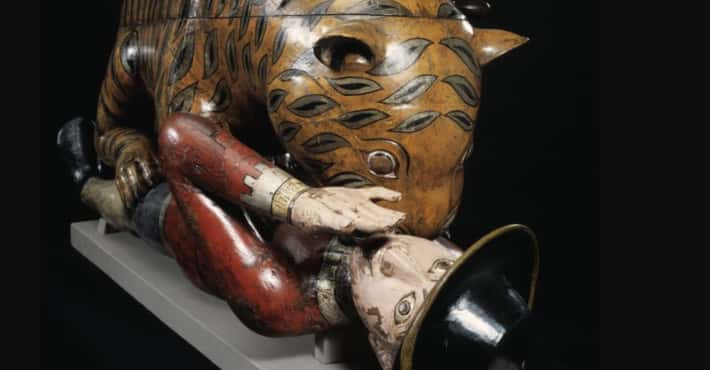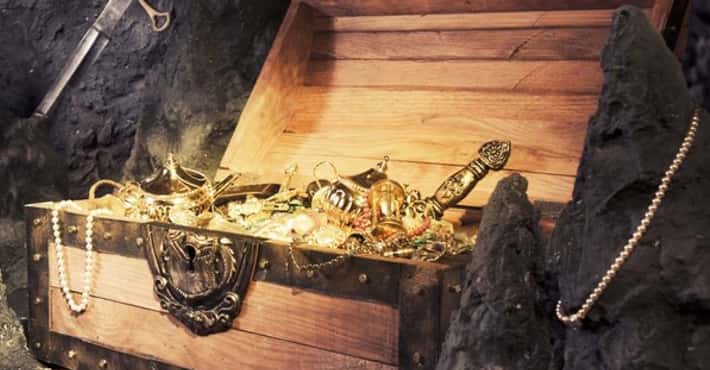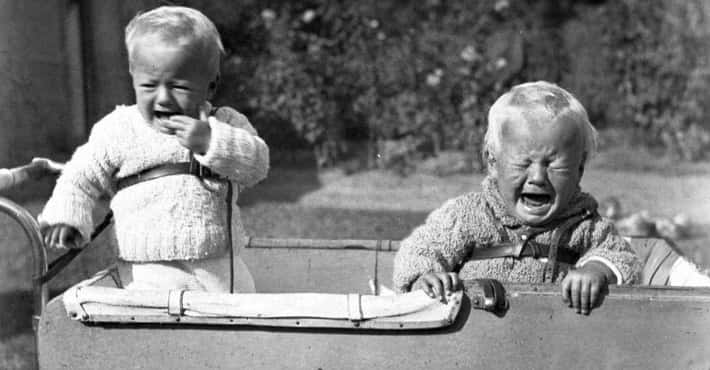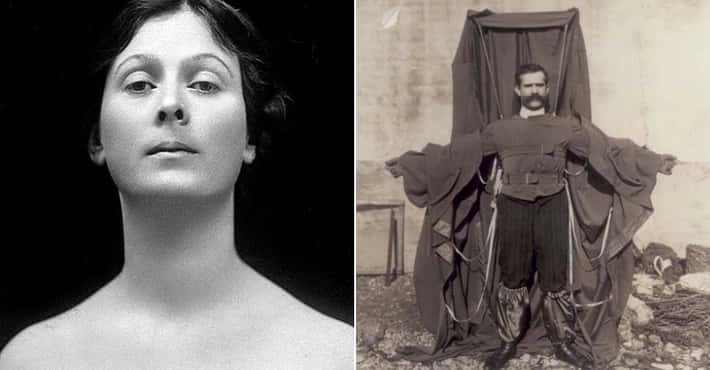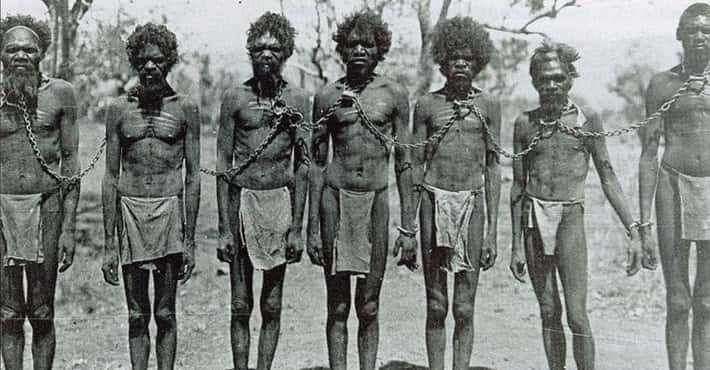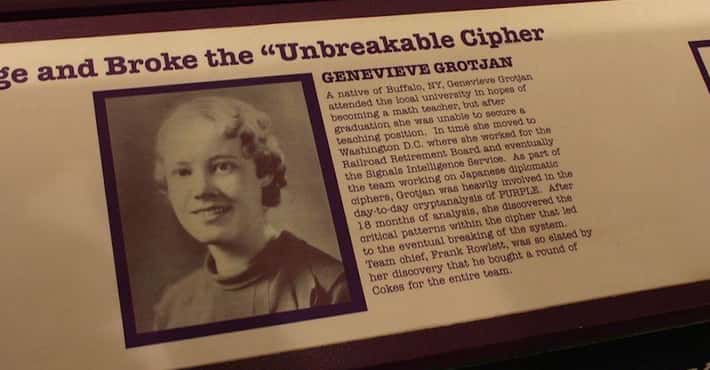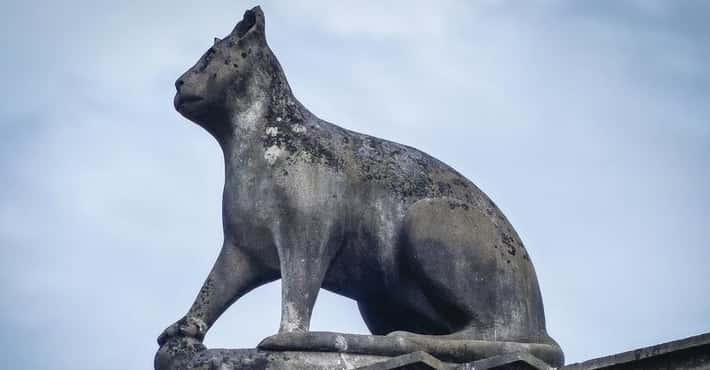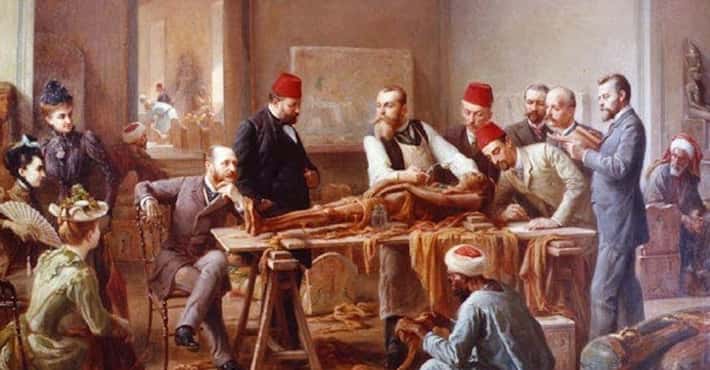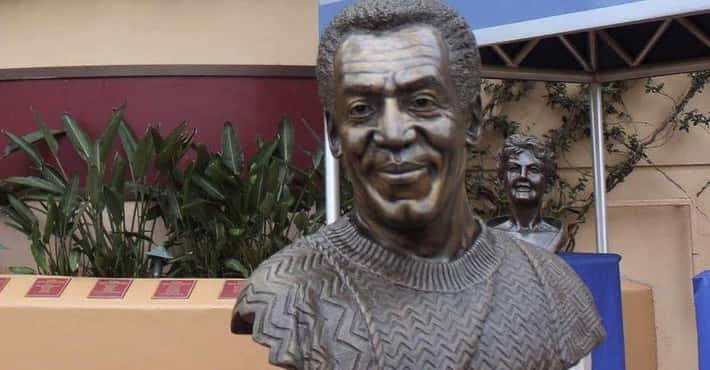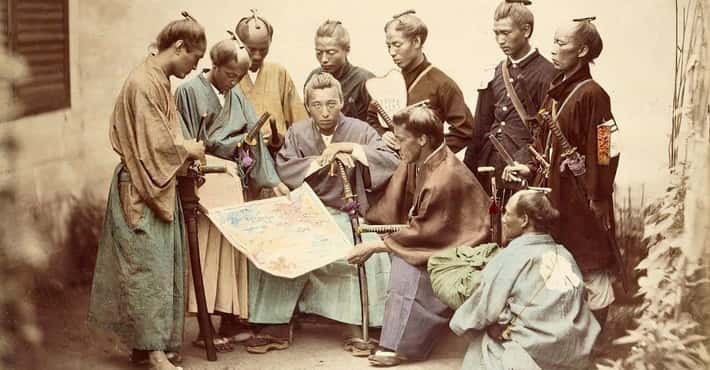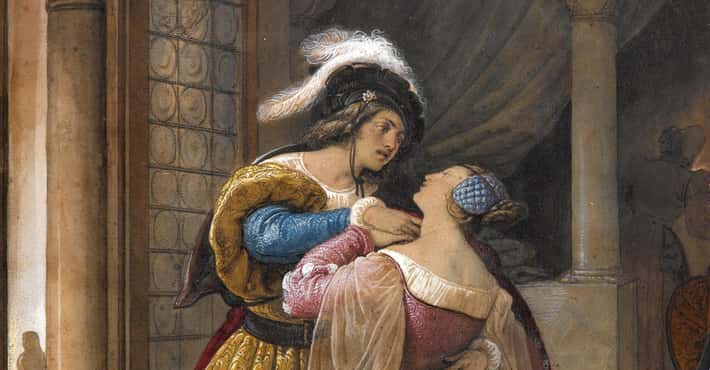
Historical References In 'Shogun,' Explained
Copy link
Vote up the explanations that make Shogun even better.
Based on the book of the same name, Shogun is the story of the struggle for power in Japan in the early 17th century. As Japanese warlords and warlords fight for supremacy, the presence of Europeans adds another layer of complexity to the intrigue.
Shogun is a mix of history, fiction, drama, and action, influenced by real events and real people. As cultures collide, the references to historical happenings exist at every turn - many of which may be lost on those unfamiliar with 17th century Japan. While books, movies, and television have offered glimpses into the world of samurai, shoguns, and the like, it's difficult to tell what's real and what's the creation of popular culture and media.
Shogun is no different, full of passing comments about life and death in Japan, often without much explanation. Despite being a work of historical fiction, there's a lot of truth about history mixed into each and every moment of the series. And, understanding them just makes Shogun even more of an engrossing trip into the past.
- Photo: FX184 VOTES
Anjin-San
Use In The Show: It's used repeatedly in Shogun and in reference to John Blackthorne, even becoming part of his name-of-sorts: Anjin-san.
Definition: Literally, anjin means “pilot” - which the show tells viewers in Episode 1. Adding -san was a sign of respect comparable to a Ms., Miss, Mr., or another formal way to address someone.
Broader Context: Blackthorne is, in fact, a pilot of a ship, and is shown respect, making Anjin-san a logical way to refer to him. There is at least one historical example of an individual from the West called a similar name in feudal Japan - Miura Anjin. This was William Adams, who served as the inspiration for Blackthorne's character in Shogun, the book by James Clavell.
Adams first arrived in Japan in 1600 aboard the Liefde. His ship and what remained of his crew were seized by Tokugawa Ieyasu, a daimyo and future shogun. Adams later helped Japanese sailors build a Western-style ship, an act that allowed Adams and his men to ingratiate themselves to Ieyasu.
Before he was finally allowed to leave Japan, Adams served as a trade advisor to Ieyasu as well as offered diplomatic guidance. Ieyasu, by then shogun, made Adams a samurai and declared that William Adams ceased to exist. Adams's new name was Miura Anjin.
“Miura Anjin” was derived from the Japanese word for pilot as well as the name of the land the shogun gave Addams. “Miura” referred to “an estate of two hundred and fifty koku in Hemi in Miuragori in the province of Sagami.” Each koku was the amount of land needed to produce one koku of rice, or enough to feed one person for a year.
- Photo: FX269 VOTES
Natto
Use In The Show: When John Blackthorne inquires about the natto Mariko and Fuji are eating in Episode 4, she tells him it's not for him. He persuades her to let him taste it, ultimately describing it as “stinky” and like “spoiled cheese.”
Definition: Natto is a traditional Japanese dish made from fermented soybeans. Natto is often served with soy sauce, mustard, chives, and rice.
Broader Context: Blackthorne eating natto is another act of assimilation on his part. Alongside trying to properly pronounce the language, Blackthorne's efforts to embrace Japanese food highlight its importance in Japanese culture.
Natto has been consumed in Japan for thousands of years and may have been introduced to the island by the Chinese. Legendarily, natto is linked to the warrior Minamoto Yoshiie. It is said that he and his men accidentally created it when they hurriedly packed boiled soybeans in rice straw sacks. The horses that carried the sacks aided the fermentation of the beans.
Considered a superfood of sorts, natto is high in vitamin K2, fiber, and manganese. Natto can be fermented with or without salt and served in soup-like or paste-like forms.
- Photo: FX385 VOTES
The Flux
Use In The Show: When offered a second bath in one week in Episode 2, John Blackthorne scoffs and asks if the intent is for him to catch “the flux.”
Definition: The flux was an ailment characterized by diarrhea, stomach cramps, vomiting, and fever. Also called “bloody flux,” it's now referred to as dysentery.
Broader Context: The flux (dysentery) was and is caused by bad water or food. Historically, the onset of the flux meant extreme digestive discomfort that could lead to dehydration and death.
Because germ theory didn't exist yet, it wasn't clear how the flux came about. Blackthorne, an Englishman, was well aware of the devastating effects of the flux since England had repeated outbreaks of the disease starting during the Middle Ages.
The flux was also problematic on ships where there was little room for anything resembling modern hygiene and diets were lacking, at best. All of this, combined with a lack of knowledge of Japanese bathing standards (including the hot, clean water) would have made Blackthorne extremely cautious.
- Photo: FX459 VOTES
Hatamoto
Reference In The Show: When John Blackthorne is designated hatamoto in Episode 3, he is told that the title is a great honor. In Episode 4, Blackthorne learns that being hatamoto comes with a home, a salary, and a consort.
Definition: Literally, hatamoto means “beneath the flag.” This is because a hatamoto is a samurai ("one who serves") who fights under the banner or flag of his daimyo.
Broader Context: A hatamoto was a high-ranking samurai, one who emerged as especially powerful during the Sengoku period. A daimyo had several hatamoto, but Tokugawa shoguns had an entire group of retainers who served in roles comparable to generals.
In Japan during the 17th century, hatamoto were largely from familial lines of men who had helped Tokugawa Ieyasu take control of Japan. Two divisions of retainers were increasingly delineated during the Tokugawa shogunate, with higher-ranking hatamoto paid in land while their lower-ranking counterparts, called gokenin, were compensated in rice. Another right afforded to hatamoto that the gokenin didn't receive was the ability to hold an audience with the shogun.
- Photo: FX565 VOTES
Consort
Use In The Show: As hatamoto, John Blackthorne is given a consort. He does not want a woman to serve him or to sleep with. The woman chosen, Usami Fuji, does not favor taking up with Blackthorne either. They both accept the custom, however.
Definition: A consort is the spouse of a ruler and, in 16th-century Japan, a consort was akin to a wife without any sort of marriage ever taking place.
Broader Context: When Yoshii Toranga gives Blackthorne a consort, he entrenches the Englishman even further in Japanese society. As hatamoto, Blackthorne is a samurai, and Usami Fuji as a consort only connects him more to that designation. Fuji was previously married to Tadayoshi but, after he dishonored himself, Tadayoshi performed seppuku. Tadayoshi also took the life of his son to restore his family's honor.
Usami Fuji, for her part, was adopted into the family of a samurai hero who died in service to Japan. She was then raised by one of Toranga's most trusted associates, Toda Hiromatsu.
There is historical precedent for all of these individuals and these actions. Blackthorne's story draws on that of William Adams - Miura Anjin - who did marry a Japanese woman named Oyuki Magome. There is no direct counterpart in the character of Usami Fuji, but the relationship is comparable.
Toda Hiromatsu, as a Toranga loyalist, is inspired by Hosokawa Fujitaka. Fujitaka was not associated with Tokugawa Ieyasu but did serve shogun Ashikaga Yoshiaki (whose reign ended in 1573 CE) before switching alliances in support of Oba Nobunaga, the man who usurped power from the Ashikaga shogunate but never actually held the title of shogun himself.
- Photo: FX676 VOTES
Shogun
Use In The Show: The title of the show, and first uttered in Episode 2. When Blackthorne is in prison, Friar Domingo provides him with important information about life in Japan, namely the highest title a mortal can achieve is that of shogun.
Definition: A shogun is a title that has changed in Japanese history. Before the 13th century, a shogun was a military general. From 1192 CE forward, a shogun was a hereditary dictator. In theory, the shogun served the emperor, but in practice the shogun maintained an iron grip on the military, rendering the emperor a mere theological leader.
Broader Context: Initially, shogun was a shortened version of the term seii tai shogun - or “barbarian-expelling general.” A shogun did not hold political power, per se, since that rested with the emperor. As warrior chieftain Minamoto Yoritomo rose to power during the late 12th century, he defeated rivals like the Taira clan and dominated political authority in Japan to such an extent that he reshaped what it meant to be shogun.
By 1192 CE, Yorimoto established the first shogunate, or government run by a shogun. The shogunate is also referred to as a baukufu or “tent government,” and the power of the shogun demonstrated itself through a private military made up of samurai.
Shoguns ruled Japan for nearly 700 years. The three shogunates were the Kamakura (1192-1333 CE), the Ashikaga (1336-1573 CE), and the Tokugawa (1603-1868 CE)
- Photo: Shogun / FX744 VOTES
Ronin
Use In The Show: The presence of ronin permeate Shogun and, in episode five, it's revealed that Mariko's husband, Toda Hirokatsu “Buntaro,” escaped certain death with the help of ronin who helped him fight against Lord Yoshi Toranga's enemies.
Definition: A ronin was a samurai who has no lord, no master. A samurai could become a ronin when his master died or after he fell out of favor with his lord.
Broader Context: There could be both honor and shame in being a ronin, depending on one's circumstances. If a samurai was cast out from his master for some sort of offense, being a ronin carried the weight of that with him - and so did his family and anyone bound to him.
The story of the 47 Ronin, however, was one of revenge and loyalty. The popular tale was based on an actual event that took place during the early 1700s. This was during Tokagawa period, albeit a bit later than when Shogun takes place. The play 47 Ronin was written during the mid-18th century and was set during the 14th century so it would not prompt any governmental backlash.
As for the plot of 47 Ronin, when Lord Asano was killed by Lord Kira, 47 of Asano's warriors - now ronin - avenged their master's murder by taking Kira's life. Despite having committed a crime worthy of execution, the 47 ronin were permitted to commit seppuku and endure an honorable death because of the unwavering loyalty they showed their lord.
- Photo: FX860 VOTES
Seppuku
Use In The Show: On numerous occasions, the term seppuku is mentioned, including after Tadayoshi dishonors Yoshii Toranaga. As a way to restore the honor of his family and to make up for the offense, Tadayoshi asks to commit seppuku.
In episode seven, the audience learns that Toranaga served as second when he was a young boy after having defeated an enemy in battle.
Definition: Seppuku is ritual suicide by disembowelment. It is undertaken in the event of disgrace or when one is sentenced to death.
Broader Context: Seppuku, sometimes called hara-kiri, is more than death by self-disembowelment. Seppuku is an elaborate process once reserved for members of the samurai class.
Among the notable individuals to undertake seppuku in Japanese history was Minamoto Yorimasa in the late 12th century when, upon suffering defeat in battle, he cut open his belly. Afterward, one of his retainers cut off Yorimasa's head. These two acts influenced the later development of the practice. Similarly, Yorimasa said a poem before taking his life, another step in the seppuku process. In anticipation of ever being in a situation that would call for seppuku, many samurai prepared a jisei or “death poem,” a reflection on life undertaken by many men on their deathbeds.
As seppuku became more elaborate, the doomed man bathed, and ate a final meal before gathering his weapon and his kaishaku, a man to cut off his head after he had disemboweled himself. The man then used weapons such as a tachi (longsword), a wakizashi (short sword), or tanto (knife) to cut open his abdomen.
- Photo: FX958 VOTES
Samurai
Use In The Show: From the outset, Shogun features samurai and, in Episode 2, John Blackthorne is informed that one of the men on the Council of Regents is Sugiyama, a man descended from a wealthy samurai family.
Definition: A samurai was a warrior who served his lord or daimyo militarily. Samurai, sometimes called bushi, became an established class in Japan by the 12th century. They enjoyed this special status until the Meiji Restoration during the late 18th century.
Broader Context: A class of warriors called samurai emerged by the 12th century, but Japan's long history of war over land meant fighters in the vein of samurai existed for centuries before that. Samurai carried a variety of weapons but are perhaps best known for their swords, notably the katana.
By the Sengoku Period, samurai were heavily ingrained in the feudal structure, linked to specific clans, and beholden to a general code of conduct. Samurai served daimyo, but the intense animosity among lords vying for supreme authority meant samurai could rebel against one lord in favor of another. Samurai could also become daimyo by weakening or eliminating their lord.
Samurai were largely men, but not exclusively. Tomoe Gozen was a woman warrior, or onna-musha, who fought alongside men during the 12th century. There is documentation of women samurai extending through the entire history of the samurai itself.
- Photo: FX1061 VOTES
To Bleed Someone
Use In The Show: In Episode 3, John Blackthorne asks if a Japanese man tending to him is a “warlock” who “aims to… bleed me, to… release the foulness from my blood.” He is assured that the man is “a doctor who cares for the sick and injured.”
Definition: To “bleed” someone refers to bloodletting, the practice by which individuals were cut open so that the body could rid itself of excess humors.
Broader Context: At the time, physicians believed that eliminating blood and other pollutants from the body could restore “balance” to one's humors. It was common in medieval Europe where medical books praised its effects:
[Bloodletting c]lears the mind, strengthens the memory, cleanses the guts, sharpens the hearing, curbs tears, promotes digestion, produces a musical voice, dispels sleepiness, drives away anxiety, feeds the blood and rids it of poisonous matter and gives long life, cures pains, fevers and various sicknesses and makes urine clear and clean.
Bloodletting was practiced in both Western Europe and Japan during the 16th and 17th centuries, so it would not have been unheard of for Blackthorne to be bled. The fact that the Englishman called his Japanese physician a “warlock” could be his lack of understanding Kampo (traditional herbal) medicine that was common.
Another factor was religious tension that dominated Blackthorne's very existence. To call someone a “witch” or a “warlock” could be associated with mistrust and fear of someone unfamiliar, especially a person who had a different belief system than your own. With the lack of understanding on Blackthorne's part, it's not out of the question that this was part of his mindset.
- Photo: FX1172 VOTES
Daimyo
Use In The Show: In Shogun, Yoshii Toranga is the most powerful daimyo in Japan. Torango is largely based on the real daimyo Tokugawa Ieyasu who became shogun in 1603 CE.
Definition: A daimyo was a military warlord who served under the authority of the shogun. The word daimyo comes from two Japanese characters meaning “great” and “name."
Broader Context: As elite, dominant figures in Medieval Japan, the daimyo were initially landholders who, by the 14th century, came to hold more military power. As a result, the daimyo were a constant threat to each other and the shogun himself.
Daimyo held economic and political authority in their lands as shugo, or military governors. The daimyo were served by samurai who received land, labor, and other resources from peasants who were also subordinate to the daimyo. During the Ashikaga shogunate (1336-1573 CE), the power of the daimyo grew and many individuals became regional powers. When the Ashikaga shogunate collapsed, it led to the Warring States Period - or Sengoku - when Shogun is set.
- Photo: FX1259 VOTES
Divine Mandate
Use In The Show: As part of the education Friar Domingo offers John Blackthorne while they both await their fates in prison, he mentions that Yoshii Toranga believes he has a “divine mandate” to be shogun.
Definition: A divine mandate is one brought on by the “mandate of heaven.” Initially a Chinese idea, the divine mandate was seen in Japan as an endorsement of a ruling family.
Broader Context: While the Chinese believed the mandate of heaven endorsed one single individual, the Japanese extended that mandate to an eternal ruling family. Unlike the Chinese mandate - which could be revoked - the Japanese mandate applied to an entire familial line.
Tokugawa Ieyasu (the individual who influenced the character of Toranga) was a member of the Matsudaira clan, which claimed to be descended from the Minamoto clan. The latter was the surname of the first shogun to consolidate power in Japan, Minamoto Yoritomo. This was the justification for the divine mandate referenced in the show.
















